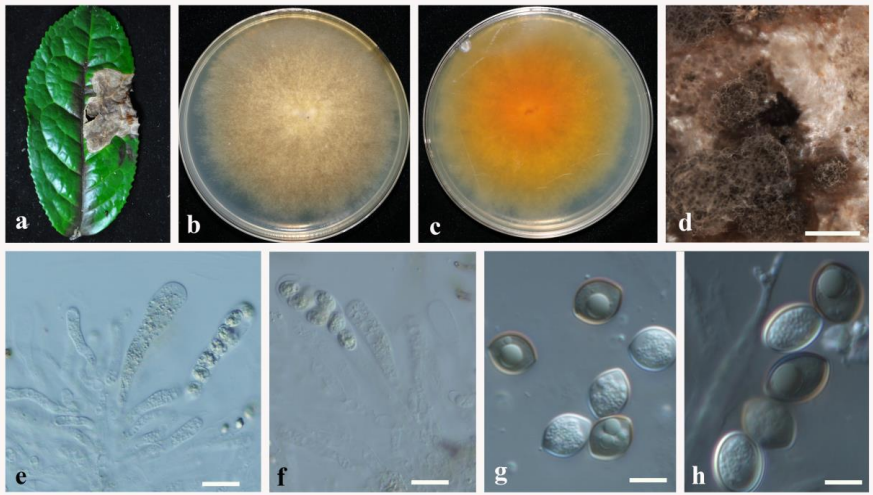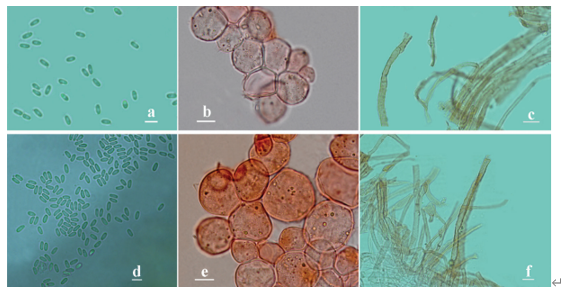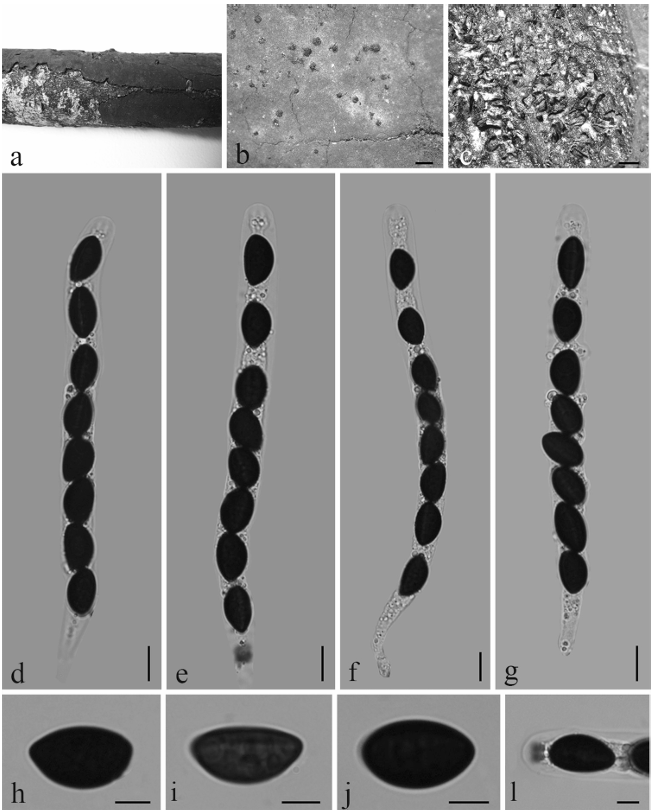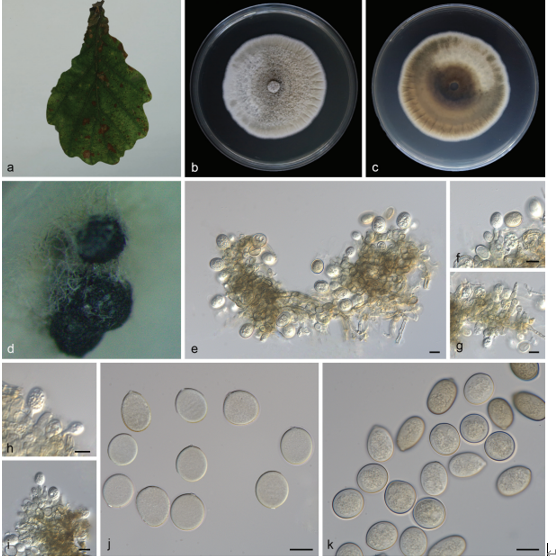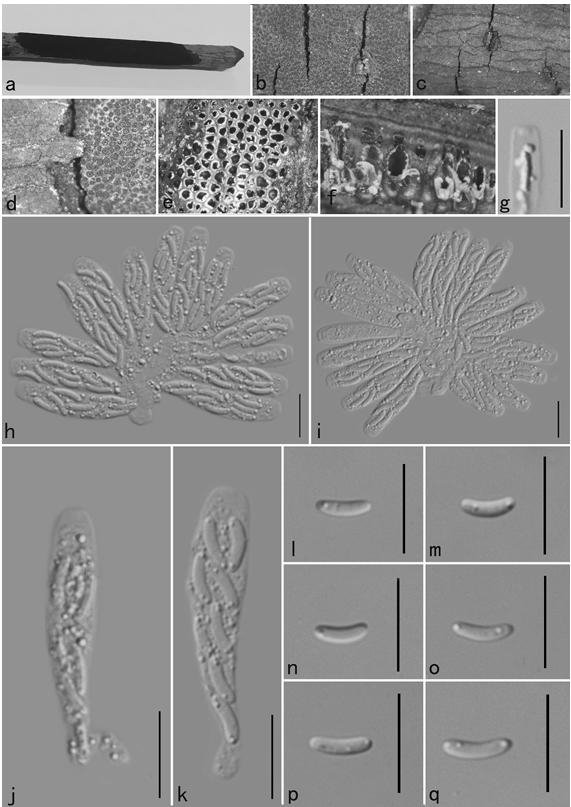Chaetomium camelliae Jayaward & Manawas, sp. nov. 2021
MycoBank Index fungorum: IF558001; Facesoffungi number: FoF03512
Holotype: JZBH3340001.
Morphological description
Sexual morph:Ascomata superficial, ostiolate, yellowish to greenish olivaceous subglobose, 165–315 μm diam. Ascomatal wall brown, 472 composed of hypha–like cells, textura intricata in surface view. Asci fasciculate, clavate, 20–30 × 10–15 μm (x̅= 20 × 10 μm, n = 20), stalks 20–40 μm long, with 6–7 ascospores, Ascospores 10–12 × 6–8 μm (x̅= 10 × 7 μm, n = 40), hyaline at the begin become olivaceous brown when mature, limoniform, bilaterally flattened slightly with age, with an apical germ pore.
Asexual morphs:
Cultures: Colonies on PDA grow 95 mm diam., within five days, yellowish floccose aerial hyphae, and greenish exudates; reverse light brown.
Habitat: on dead Camellia sinensis leaves.
Distribution: CHINA, Fujian Province, Zhangzhou County.
GenBank Accession: ITS: MW007830;tub2: MW013330;Notes: Preliminary data analysis of ITS region revealed the taxon isolated in the present study belongs to Chaetomium. According to the phylogenetic analysis based on LSU, ITS, tef1 and tub2, the isolates obtained from the current study developed a clade sister to Chaetomium pseudoglobosum (CBS 574.71) with 100% ML bootstrap, 99% MP bootstrap and 1.0 BYPP. In a pairwise sequence comparison between the sequences of the type of the present study and Chaetomium pseudoglobosum (CBS 574.71), there was 8% nucleotide difference in LSU along with the 584 nucleotides and 4% nucleotide difference in ITS along the 521 nucleotides. In comparisons of protein-coding regions; there were 3% differences in tef1 (out of 926 nucleotides), 1% differences in tub2 (465 nucleotides) and 7% differences in rpb2 (565 nucleotides). Based on both morphological and molecular data the strains isolated in the present study were identified as a new species. There is only one record of species of Chaetomium associated with Camellia flowers (Watson 1950).
Reference: Manawasinghe IS, Jayawardena RS, Li HL, Zhou YY, Zhang W, Phillips AJL, Wanasinghe DN, Dissanayake AJ, Li XH, Li YH, Hyde KD, Yan JY 2021 – Microfungi associated with Camellia sinensis: A case study of leaf and shoot necrosis on Tea in Fujian, China. Mycosphere 12(1), 430–518, Doi 10.5943/mycosphere/12/1/6
